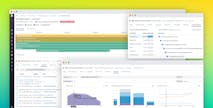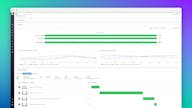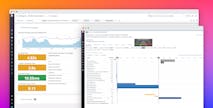Lights…action…streaming
Since its inception almost two decades ago, streaming media has become a global force to be reckoned with, especially given the recent pandemic, which forced many more people to stay at home—and necessitated new forms of recreation and leisure.
In Indonesia, streaming is the most popular form of digital entertainment, growing by nearly 200% since 2015. To address this need, EMTEK, one of the largest media groups in Indonesia, launched Vidio in 2015. Vidio is a multi-platform streaming service aimed at the increasingly connected Indonesian population, a diverse group that ranges from millennial trendsetters to mobile-first consumers of all ages. Accessible via mobile app, Smart TV, and web browser, Vidio provides Indonesian netizens with quality, curated local and premium content, including live sports matches, popular local series, and movies.
Scaling infrastructure to maintain a market lead
With over 40 million app downloads and more than 60 million monthly active users, Vidio is one of the leading video streaming applications (ranked #1 in the Google Play Store as of April 2020) for the Indonesian market. Vidio enjoys strong brand recognition and significant consumer momentum—especially among Android users, which account for 93% of all Indonesian mobile devices.
To succeed in the fiercely competitive streaming space, Vidio engineers must ensure application uptime and consistent high stream quality—none of which are possible without the ability to visualize the health and performance of their applications and infrastructure.
“ To keep our lead in the market, we must flawlessly deliver content to our consumers. This requires us to scale our infrastructure in response to customer demand.”
Ismail Hasbullah
Head Of Operations, Vidio
Monitoring live streams
To provide a smooth, latency-free experience, Vidio’s DevOps and Engineering teams must ensure that infrastructure is scaling appropriately and that changes to applications are deployed successfully—while also monitoring application user interfaces, backend data operations, and streaming-video pipelines.
While a modern monitoring tool was essential for the team to observe their dynamic cloud environment, it was also important for Vidio to find an intuitive platform which would not add extra overhead (in the form of workflow, processes, and additional onboarding) to its Engineering and DevOps teams.
“We needed a tool that could monitor our dynamic GCP infrastructure as well as visualize how our different services were interacting to provide content for our watchers,” Ismail explains. This is particularly important during live sports events, which are widely popular throughout Indonesia. For instance, a single soccer match can attract an audience of up to eight million viewers.
“ The country is crazy about soccer and any match yields a spike in viewership. Datadog has helped us monitor the health of our streams, giving us a view into the flow of users through our systems.”
Ismail Hasbullah
Head Of Operations, Vidio
How Datadog helps Vidio scale
Vidio utilizes three parts of the Datadog platform: Infrastructure Monitoring, Application Performance Monitoring (APM), and Synthetic Monitoring.
When performing computationally intensive tasks like video streaming, using load balancers allows for an efficient distribution of the workload. Vidio uses GCP’s built-in load balancing, and relies on Datadog’s GCP integration to view the health of their services and the underlying compute engines—important performance indicators that would otherwise be a gap in visibility.
Vidio also configures its systems to send custom metrics to Datadog, such as registration success rate, subscription success rate, and user traffic. Each of these indicators is then aggregated, analyzed, and displayed on a Datadog dashboard, so that the Vidio team can monitor and optimize key product features to improve their success rates.
“ Datadog’s GCP integration allowed us to get visibility into services like Google Compute Engine and Google Cloud Storage instantly. Their out-of-the-box dashboards provided immediate value by showing critical metrics scoped to the tags and metadata we care about most.”
Ismail Hasbullah
Head Of Operations, Vidio
To understand the full customer experience, Vidio leverages Datadog APM to visualize backend requests and Datadog Synthetic Monitoring to proactively test their applications. Fluctuations in throughput, latency, requests, and error rate are visualized in time-series dashboards and anomalies in these metrics are detected by Watchdog. The Vidio team leverages this data to scale (or otherwise optimize) their applications as necessary.
“ With Datadog APM, we can monitor a request as it travels through our backend, starting from the moment a viewer presses the play button. This allows us to connect frontend metrics from synthetics (like uptime and response time) with the rest of our environment—and resolve issues before they affect viewers.”
Ismail Hasbullah
Head Of Operations, Vidio
When a new service is created, the team ensures that there is a corresponding Datadog dashboard providing a view into the health of the service. This allows everyone in the organization a view into individual services, regardless of role or technical ability. When it’s time to make a change to the code base or push a new feature, Ismail explains, “the team checks these dashboards to ensure that there is no impact on latency or errors.”
“The dashboard for the payment service allows the developers and product team to track the number of transactions per week (including the success/failure rates)—and allows us to be alerted if there are any drops or anomalies with these metrics. The ability to tag these metrics with different dimensions in Datadog lets our teams see if the payments were made by methods like credit card or bank transfer, and look at how our users are interacting with the payment service.”
How observability has benefited Vidio
As a key player in the intensely competitive Indonesian streaming video sector, Vidio delivers stellar, highly rated content to millions of viewers across the country. To ensure a seamless experience (to both retain current users and attract new customers), Vidio uses Datadog to gain real-time, granular insights into their infrastructure and applications.
Since Vidio has incorporated Datadog into their troubleshooting workflow, their teams have managed to reduce both mean time to detection (MTTD) and resolution (MTTR). They’ve achieved this by providing a unified tool for teams to visualize, alert on, and resolve incidents as they occur in their main application. By proactively testing endpoints with Synthetic Monitoring, and monitoring errors and latency on real-time traces with APM, Vidio can stream to their viewers with confidence and consistency.



